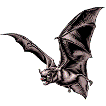Museum, University of Nebraska State

University of Nebraska State Museum: Mammalogy Papers
Document Type
Article
Date of this Version
1-14-1985
Citation
Journal of Mammalogy (1985) 66(1): 134-136.
Journal website: http://www.mammalsociety.org/pubjom/index.html
Abstract
We have developed a new technique for following the movement of small mammals at night. It entails the use of fluorescent pigments and ultraviolet light. This method allows one to gather extremely accurate information on the location of animals and to trace the movement of individuals for up to 900 m. For much of this distance a detailed record is left by the trail of pigment. It can then be determined which objects are manipulated, what plants are climbed, what burrows are entered and which items are eaten. The use of fluorescent pigments to track animals has two other major advantages. First, it is inexpensive; all that is needed are the pigments and a UV light source. Second, the pigments are reported by its manufacturer to have low toxicity (they have been used in food habit studies), and we have found that animals can be exposed repeatedly to the pigments without apparent ill effects. This new method will allow quick and accurate determination of the macro- and microhabitat use by small mammals. Detailed information on home range, movement patterns, and habitat use can be found within a matter of a few days.


Comments
Copyright © 1985, American Society of Mammalogists. Used by permission.